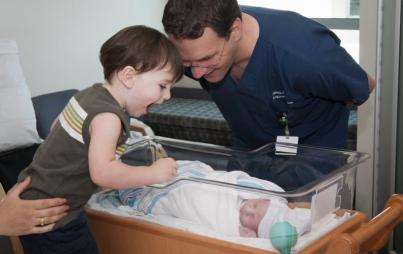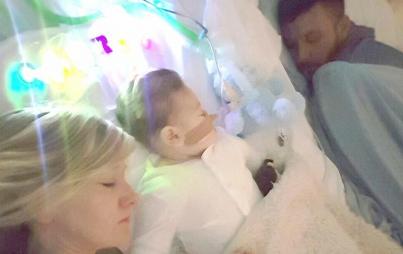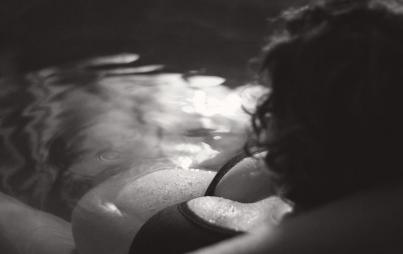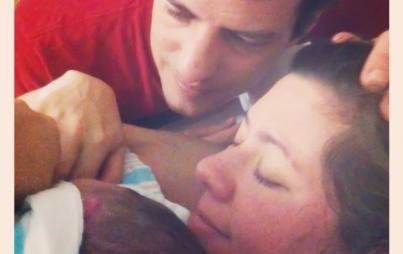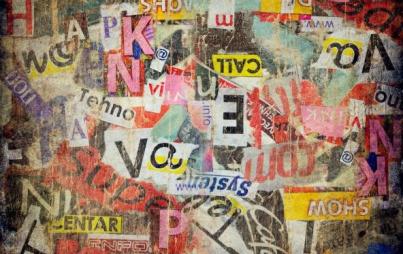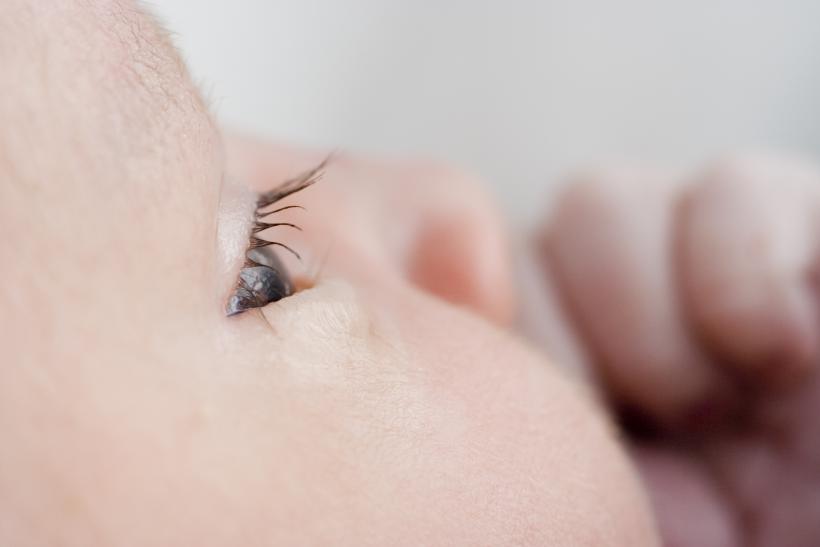
Thinkstock
In June 2008 I was working nights as a RN at a busy labor and delivery unit. Those overnights were long and by morning my feet would be throbbing from the running here and there, my stomach groaning from my attempts to subsist on diet soda and handfuls of popcorn. It wasn't always that way, but this night was.
We had a woman on the unit in labor—unremarkable labor. That is—to protect her and her family, I will only offer this—until her baby died.
That's a sad and shocking way to start a story I know. But it is unfortunately exactly was happened. There was no apparent cause, no real explanation. We were all left devastated by the sudden tragedy of the events.
Bad things happen. To live is to suffer. Death is, sadly, inherent in every life.
*
In September 2010, I delivered my almost 11-pound baby girl in my kitchen. In the months leading up to her birth, as my plans trickled out to my friends and co-workers, I can only assume people deduced I must not have cared about the life of my unborn child—in the light of seeing death. In fact it was just the opposite.
It came as no surprise this week when my phone lit up with the text messages of friends (and foes) sharing this article. If you're busy—and you probably are—I'll save you the trouble of reading it and just sum it up. The mother, Ashley Martin, chronicled her, rather harrowing, homebirth. Her child had a face presentation (when the baby emerges face first instead of the usual back of head) and a shoulder dystocia (when the baby's anterior shoulder gets stuck and needs some maneuvering to get under mom's pelvic bone). The child, Zinn, was successfully delivered at home, and then, was ultimately transferred to the hospital after delivery.
But she is fine. Zinn is now a toddler and remains fine. What happened to Ashley Martin was scary and her telling of the story is scarier. "My baby almost died. I almost died."
But let me relate a similar story another way.
*
At around 12 am on September 12th, my water broke and I called my midwife. I baked a cake. I put on Jack Johnson. My husband filled the birth pool. We called our photographer and our friends. We woke up the older children. I labored all day, swaying and singing, laughing even. My husband fed me popsicles. My 15-year-old applied my lip balm.
At around 2:40 I was completely dilated and ready to push. And that I did. With one hefty groan her head was delivered. I waited for my body's signal that I should push again. When it didn't come I pushed without benefit of contraction to aid in my effort.
Nothing happened. She didn't budge.
I pushed again, harder. Nothing. And again. And again. Nothing. After a couple of minutes of this my midwife and I decided I should flip to my hands and knees, and technique aptly called the hands and knees manuever (or the Gaskin maneuver, after Ina May Gaskin, founder of Farm Midwifery Center). This is the same series of steps that we would have taken had we been in a hospital.
With the help of the midwife—and some, yes, intense effort on my part—Ella finally slid out into the water. This whole experience lasted around five minutes and 45 seconds. But she was limp, pale. It was scary. I'm trained in neonatal resuscitation, as is my midwife (who's been catching babies longer than I've been breathing). Ella needed some help getting going, as babies sometimes do, regardless of where they are born. We gave her some oxygen and a couple of puffs our air from our own lungs. Once she was breathing fine, I delivered the placenta. (Which is buried in my backyard—lest you think I'm not weird enough.) Then we moved to the couch and nursed and cuddled. We ate cake and pizza. In that order. We drank champagne, emptied the pool, washed 5 loads of towels, and eventually all fell into bed.
So how does my story differ from the one outlined above? In many ways it does and in many ways it doesn't. I don't know how well trained Ashley Martin's attendants were. I don't know how well educated or trained she was. But I won't call any of that into question because I honor her experience and her pain.
What I do want to say is this: the biggest difference between our experiences is how we see them. When you write something for the world to read you get to write it from your perspective. Your pain or your joy. And as it goes I'm doing just that.
The vast majority of the time, when left alone, birth just happens. Like breathing, like pooping, like walking. It just happens. Homebirth has been proven safe, but that's only a small part of the overall picture. The bigger picture is shit happens. Shit actually happens. But just because shit—literally and metaphysically—happens doesn't mean the bigger picture isn't good. Beautiful even. Just because shit happens doesn't mean that the entire experience should be negated. Shit happened to Ashley. Shit happened to me. (Now might be a good time to pardon my liberal use of the word shit). Ashley's baby got stuck. My baby got stuck. Her baby wasn't breathing. My baby wasn't breathing. But both of our babies turned out fine despite that.
Homebirth doesn't scare me. You might think this makes me foolish or ignorant. But the data is there. It's safe. And I believe in it. I believe in myself, my body, and the people I chose to assist me.
We live in a first world country. And as such we've come to expect only positive outcomes. All the time. We idolize physicians and their capabilities When people are sick we aim to cure them. When tiny micro preemies are born we fight hard to save them. When things end badly we are devastated. We no longer honor our own power, our own intuition, our own abilities.
But there is room for both.


